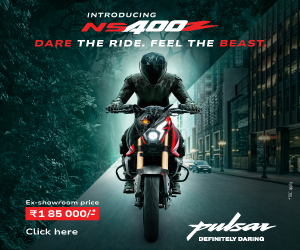 Piyush Sonsale describes the experience of the Yamaha Riding Clinic 2011, India’s first manufacturer-backed motorcycle riding school
Piyush Sonsale describes the experience of the Yamaha Riding Clinic 2011, India’s first manufacturer-backed motorcycle riding school
Photography: Yamaha India
 Piyush Sonsale describes the experience of the Yamaha Riding Clinic 2011, India’s first manufacturer-backed motorcycle riding school
Piyush Sonsale describes the experience of the Yamaha Riding Clinic 2011, India’s first manufacturer-backed motorcycle riding school
Photography: Yamaha India
The Yamaha Riding Clinic 2011 was conducted between April 11 and 14 on the Chennai race-track, where I donned the racing skin (riding suit) and rode the last two days of the school to experience the programme at first hand. The first two days were meant for novice riders and the last two for experts. Yamaha had invited former 250-cc GP rider, Osamu Miyazaki, from Japan to train the participants. The fee for the school was Rs 3,000, which covered the rent of the bike with full service support, fuel and food.
 |
 |
Day one began with some limbering up exercises. Contrary to popular belief, any form of motor sport (motorcycle more so) causes extreme physical exhaustion; by the end of the day’s sessions, my legs would wobble inside my R-Jays due to lack of strength. We were then asked to scrutinise the bike assigned to us. The set-up of the bike is extremely important to extract the desired performance as also to avoid mishaps. Finally, we were told about the riding rules and the meaning of the various flags used to signal a rider while on the racetrack.
 |
 |
The duration of each track session was one hour in which we were allowed to ride freely. By the end of each day, we had completed three hours of riding. During the feedback sessions in the classroom, Miyazaki pointed out the flaws in every rider’s style and suggested improvements after observing the video footage he had recorded from his helmet-mounted camcorder. At the end of day one, every rider’s lap time was recorded for self judgement.
 |
On day two, we were taught how to launch the bike at the start. A swift synchronisation of the throttle and the clutch is necessary to achieve a quick start without lifting the front wheel. Next, Miyazaki selected a couple of fast corners on the track to explain the correct line to follow. For instance, the classic line for a right-hander with no immediate turn after it would be to pull out to the extreme left before the corner entry, then ride on the inside edge of the road in the corner and drift away to the extreme left again at the corner exit to carry maximum speed. At the end of the day’s sessions, the riders’ lap times were recorded again to evaluate the improvement on day two.
The programme culminated with a race organised for the participants to give us a taste of competitive riding. The best performers from the riding school and the R15 races will be promoted by Yamaha to race internationally. The YZF R15 championship 2011 begins this month. Log on to the FMSCI Website for more information.

 Nowadays a visit to the service station with your bike is like visiting a doctor – they do not believe you unless you walk in with the same symptom more than twice.
Nowadays a visit to the service station with your bike is like visiting a doctor – they do not believe you unless you walk in with the same symptom more than twice. 
 Give the engine some Lubrication
Give the engine some Lubrication
 Once the engine is drained refit the drain bolt. Ideally, you should use a torque wrench to do this, but even if you use a correct size wrench, make sure it does not slip. Using a funnel pour in the specified quantity of new oil through the dipstick opening at the top. The oil level can be checked by using a dipstick; some bikes also have a glass window. The level of the oil should not be more than the specified quantity, closer to the maximum mark on the glass window and the dipstick. Since we were using a Unicorn it requires one litre of oil. When checking the oil level with a dipstick never screw it in, just dip it and remove to check the level. Recap the dip stick and you are done.
Once the engine is drained refit the drain bolt. Ideally, you should use a torque wrench to do this, but even if you use a correct size wrench, make sure it does not slip. Using a funnel pour in the specified quantity of new oil through the dipstick opening at the top. The oil level can be checked by using a dipstick; some bikes also have a glass window. The level of the oil should not be more than the specified quantity, closer to the maximum mark on the glass window and the dipstick. Since we were using a Unicorn it requires one litre of oil. When checking the oil level with a dipstick never screw it in, just dip it and remove to check the level. Recap the dip stick and you are done. Keep your carbs checked
Keep your carbs checked

 Batteries
Batteries Changing the chain and sprocket
Changing the chain and sprocket Words: Piyush Sonsale
Words: Piyush Sonsale




















 Do’s and Don’ts
Do’s and Don’ts

 Plans in progress for next year
Plans in progress for next year 